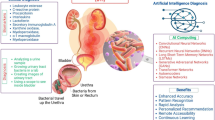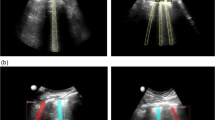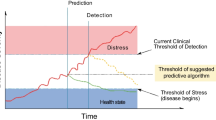Abstract
This paper tends to present a systematic review of the applications of Artificial Intelligence (AI) in the field of medical diagnosis vis-a-vis fluid cytology. The study is based on the research articles published in various reputed international and national journals and the conference proceedings from 1990 to till date. AI-based systems are becoming useful as alternative approaches to conventional techniques and are also becoming integral components of many diagnostic systems. Artificial intelligence is being increasingly used to solve complex practical problems in various areas and is becoming more and more popular nowadays. The use of AI for tackling various problems in medical science has diversified significantly during this period. It emerges as a dominant technique for addressing various difficult research problems. This paper follows the trend and evolution of application-based research during the last three decades. It also presents a technical comparison of novel methodologies developed by the researchers to deal with diagnostic problems in the analysis of body cavity fluids. Abnormalities in body cavity fluids lead to various serious disorders like meningitis, subarachnoid hemorrhage, CNS malignancy, demyelinating disease, heart failure, pulmonary embolism, cirrhosis, pneumonia, pleurisy, and pericarditis, arthritis, joint Infection and joint hemorrhage. Moreover, the paper includes recent research articles published during 2018 and 2019 to present the recent progress in this domain.

Similar content being viewed by others
References
Alayón S et al (2006) An evolutionary Michigan recurrent fuzzy system for nuclei classification in cytological images using nuclear chromatin distribution. J Biomed Inform 39(6):573–588
Alex ML, Sivachandar K (2014) 3D deformable modeling of pleural effusion segmentation on CT images. Asian J Comput Sci Technol (AJCST) 2(1):13–17
Asada N et al (1990) Potential usefulness of an artificial neural network for differential diagnosis of interstitial lung diseases: pilot study. Radiology 177(3):857–860
Barwad A, Pranab D, Shaily S (2012) Artificial neural network in diagnosis of metastatic carcinoma in effusion cytology. Cytom Part B Clin Cytom 82(2):107–111
Baykal E et al (2017) Automated cell nuclei segmentation in pleural effusion cytology using active appearance model. In: International conference on computer analysis of images and patterns. Springer, Cham
Baykal E et al (2019) Modern convolutional object detectors for nuclei detection on pleural effusion cytology images. Multimed Tools Appl 79:1–20
Carrion-Valero F, Perpiñá-Tordera M (2001) Screening of tuberculous pleural effusion by discriminant analysis. Int J Tuberc Lung Dis 5(7):673–679
Castleman KR, Melnyk JH, N.I. of Child Health, H.D. (U.S.) (1976) An automatedsystem for chromosome analysis: final report. Jet Propulsion Laboratory. California Institute of Technology
Chen F et al (2001) A technique based on wavelet and morphology transform to recognize the cancer cell in pleural effusion. In: Proceedings international workshop on medical imaging and augmented reality, 2001. IEEE
Cibas ES, Barbara SD (2013) Cytology E-book: diagnostic principles and clinical correlates. Elsevier Health Sciences. Elsevier, Amsterdam
Cootes TF, Edwards GJ, Taylor CJ (1998) Active appearance models. In: Burkhardt H, Neumann B (eds) ECCV 1998. LNCS, vol 1407. Springer, Heidelberg. pp. 484–498. https://doi.org/10.1007/bfb0054760
Darooei R et al (2017) Discriminating tuberculous pleural effusion from malignant pleural effusion based on routine pleural fluid biomarkers, using mathematical methods. Tanaffos 16(2):157
de la Cruz RRG et al (2018) iXray: a machine learning-based digital radiograph pattern recognition system for lung pathology detection. In: Billingsley J, Bradbeer R (eds) Mechatronics and machine vision in practice 3. Springer, Cham, pp 91–108
Dey P, Logasundaram R, Joshi K (2013) Artificial neural network in diagnosis of lobular carcinoma of breast in fine-needle aspiration cytology. Diagn Cytopathol 41(2):102–106
Diacumakos EG, Day E, Kopac MJ (1962) Exfoliated cell studies and the cytoan-alyzer. Ann N Y Acad Sci 97:498–513
Dinevski D et al (2011) Clinical decision support systems. In: Graschew G, Rakowsky S (eds) Telemedicine techniques and applications. IntechOpen, London
Ebert LC et al (2017) Automatic detection of hemorrhagic pericardial effusion on PMCT using deep learning-a feasibility study. Forensic Sci Med Pathol 13(4):426–431
El Naqa I, Martin JM (2015) What is machine learning? Machine Learning in Radiation Oncology. Springer, Cham, pp 3–11
Estévez J et al (2002) Cytological breast fine needle aspirate images analysis with a genetic fuzzy finite state machine. In: Proceedings of the 15th IEEE symposium on computer-based medical systems, 2002. (CBMS 2002). IEEE
Eysel HH et al (1997) A novel diagnostic test for arthritis: multivariate analysis of infrared spectra of synovial fluid. Biospectroscopy 3(2):161–167
Henry TK et al (2013) Quantitative diagnosis of malignant pleural effusions by single-cell mechanophenotyping. Sci Transl Med 5(212):212ra163–212ra163
Illiff EC (2011) Computerized medical self-diagnostic and treatment advice system. U.S. Patent No. 8,015,138
Kjeldsberg C (1986) Laboratory examination of amniotic, cerebrospinal, seminal, serous and synovial fluids. Amer Society Of Clinical, Chicago
Lee J-G et al (2017) Deep learning in medical imaging: general overview. Korean J Radiol 18(4):570–584
Li C et al (2018) Developing a new intelligent system for the diagnosis of tuberculous pleural effusion. Comput Methods Programs Biomed 153:211–225
Lin TY, Maire M, Belongie S, Hays J, Perona P, Ramanan D, Zitnick CL (2014) Microsoft coco: common objects in context. In: European conference on computer vision. Springer, Cham, pp 740–755
Martínez VE et al (2009) Recognition system for mesothelials cells classification. In: World congress on medical physics and biomedical engineering, September 7–12, 2009, Munich, Germany. Springer, Berlin, Heidelberg
Mirzaii-Dizgah I et al (2013) A nonlinear model for diagnosing malignancy in patients with exudative plural effusion using routine plural fluid findings. Asian Biomed 7(6):841–846
Moeskops P et al (2016) Automatic segmentation of MR brain images with a convolutional neural network. IEEE Trans Med Imaging 35(5):1252–1261
Naik P (2016) Importance of artificial Intelligence with their wider application and technologies in present trends. Int J Sci Res Comput Sci Eng Inf Technol (IJSRCSEIT) 1(3):1–9
Ocampo E et al (2011) Comparing Bayesian inference and case-based reasoning as support techniques in the diagnosis of Acute Bacterial Meningitis. Exp Syst Appl 38(8):10343–10354
Ong SH, Jin XC, Jayasooriah R, Sinniah R (1996) Image analysis of tissue sections. Comput Biol Med 26:269–279
Orjuela AD et al (2011) Pleural tuberculosis diagnosis based on artificial neural network models. X Brazilian Congress of Computational Intelligence (CBIC’2011). Fortaleza, Ceará
Parodi S et al (2015) Differential diagnosis of pleural mesothelioma using logic learning machine. BMC Bioinform 16(9):S3
Porcel JM et al (2008) A decision tree for differentiating tuberculous from malignant pleural effusions. Respir Med 102(8):1159–1164
Porcel JM et al (2018) Development and validation of a scoring system for the identification of pleural exudates of cardiac origin. Eur J Intern Med 50:60–64
Pouliakis A et al (2014) Using classification and regression trees, liquid-based cytology and nuclear morphometry for the discrimination of endometrial lesions. Diagn Cytopathol 42(7):582–591
Prewitt JMS, Mendelsohn ML (1966) The analysis of cell images. Ann N Y Acad Sci 128:1035–1053
Reddick WE et al (1997) Automated segmentation and classification of multispectral magnetic resonance images of brain using artificial neural networks. IEEE Trans Med Imaging 16(6):911–918
Revett K, Florin G, Marius E (2006) A machine learning approach to differentiating bacterial from viral meningitis. Null. IEEE
Roffe BD et al (1979) Heparinized bottles for the collection of body cavity fluids in cytopathology. Am J Hosp Pharm 36(2):211–214
Seixas JM et al (2013) Artificial neural network models to support the diagnosis of pleural tuberculosis in adult patients. Int J Tuberc Lung Dis 17(5):682–686
Shaw RA et al (1995) Arthritis diagnosis based upon the near-infrared spectrum of synovial fluid. Rheumatol Int 15(4):159–165
Singaravel S, Suykens J, Geyer P (2018) Deep-learning neural-network architectures and methods: using component-based models in building-design energy prediction. Adv Eng Inform 38:81–90
Sodhi P, Naman A, Vishal S (2019) Introduction to machine learning and its basic application in Python. Available at SSRN 3323796
Spriggs AI, Michael MB (2016) The cytology of effusions: pleural, pericardial and peritoneal and of cerebrospinal fluid. Butterworth-Heinemann, Oxford
Straathof, Chiara SM et al (1999) The diagnostic accuracy of magnetic resonance imaging and cerebrospinal fluid cytology in leptomeningeal metastasis. J Neurol 246(9):810–814
Trajman A, Kaisermann C, Luiz RR, Sperhacke RD, Rossetti ML, Saad MHF, Sardella IG, Spector N, Kritski AL (2007) Pleural fluid ADA, IgA-ELISA and PCR sensitivities for the diagnosis of pleural tuberculosis. Scand J Clin Lab Investig 8(67):877–884
Truong H et al (1995) Neural networks as an aid in the diagnosis of lymphocyte-rich effusions. Anal Quant Cytol Histol 17(1):48–54
Ultsch A et al (1997) Evaluation of automatic and manual knowledge acquisition for cerebrospinal fluid (CSF) diagnosis. In: Conference on artificial intelligence in medicine in Europe. Springer, Berlin, Heidelberg
Van de Wouwer G, Weyn B, Scheunders P, Jacob W, Van Marck E, Van Dyck D (2000) Wavelets as chromatin texture descriptors for the automated identification of neoplastic nuclei. J Microsc 197:25–35
Vargason TJ et al (2016) A clinical decision support system for malignant pleural effusion analysis
Win KY et al (2017a) Artificial neural network based nuclei segmentation on cytology pleural effusion images. In: 2017 International conference on intelligent informatics and biomedical sciences (ICIIBMS). IEEE
Win KY, Somsak C, Kazuhiko H (2017b) K mean clustering based automated segmentation of overlapping cell nuclei in pleural effusion cytology images. In: 2017 International conference on advanced technologies for communications (ATC). IEEE
Win KY, Somsak C, Kazuhiko H (2017c) Automated segmentation and isolation of touching cell nuclei in cytopathology smear images of pleural effusion using distance transform watershed method. In: Second international workshop on pattern recognition, vol 10443. International Society for Optics and Photonics
Win KY et al (2018) Computer aided diagnosis system for detection of cancer cells on cytological pleural effusion images. Biomed Res Int 2018:1–21
Wolberg WH, Nick Street W, Mangasarian OL (1994) Machine learning techniques to diagnose breast cancer from image-processed nuclear features of fine needle aspirates. Cancer Lett 77(2–3):163–171
Wolberg WH et al (1995) Computer-derived nuclear features distinguish malignant from benign breast cytology. Hum Pathol 26(7):792–796
Wu N, Rathod V (2017) Tensorflow detection model zoo (documentation). https://github.com/TensorFlow/models/blob/master/research/object_detection/g3doc/detection_model_zoo.md
Xue Y et al (2017) A preliminary examination of the diagnostic value of deep learning in hip osteoarthritis. PLoS ONE 12(6):e0178992
Yao J, Bliton J, Summers RM (2013) Automatic segmentation and measurement of pleural effusions on CT. IEEE Trans Biomed Eng 60(7):1834–1840
Zhang L, Qiuguang W, Jiping Q (2006) Research based on fuzzy algorithm of cancer cells in pleural fluid microscopic images recognition. In: International conference on intelligent information hiding and multimedia signal processing, 2006. IIH-MSP’06. IEEE
Author information
Authors and Affiliations
Corresponding author
Additional information
Publisher's Note
Springer Nature remains neutral with regard to jurisdictional claims in published maps and institutional affiliations.
Rights and permissions
About this article
Cite this article
Mir, A.A., Sarwar, A. Artificial intelligence-based techniques for analysis of body cavity fluids: a review. Artif Intell Rev 54, 4019–4061 (2021). https://doi.org/10.1007/s10462-020-09946-y
Published:
Issue Date:
DOI: https://doi.org/10.1007/s10462-020-09946-y




